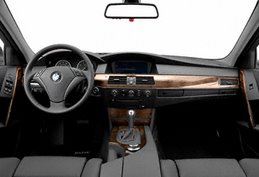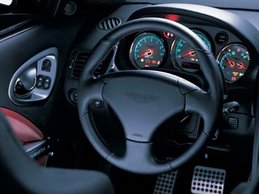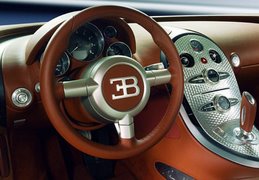 Dodge Viper SRT10 Coupe - Turns out we got what we deserved from this altruistic act, too. We got to drive the new Viper SRT10 coupe a long way in the high-speed world of highways and unpatrolled byways, through canyons and valleys and alongside the shining Pacific. After that, trolling the big coupe around in suburban Los Angeles felt like using a sledgehammer to swat a flea.
Dodge Viper SRT10 Coupe - Turns out we got what we deserved from this altruistic act, too. We got to drive the new Viper SRT10 coupe a long way in the high-speed world of highways and unpatrolled byways, through canyons and valleys and alongside the shining Pacific. After that, trolling the big coupe around in suburban Los Angeles felt like using a sledgehammer to swat a flea.Some of the noises from the gearbox are pretty rude, too, at times, and you wonder if a couple pounds of noise-deadening liner might have helped. But then you recall driving the car at Mazda Raceway Laguna Seca, how it ran up the hill to the Corkscrew hard in third gear, the V-10 bellowing as its 500-hp rage poured down the driveshaft and clawed at the pavement through giant 14.0-inch-wide Michelins.
We tried that softtop car by way of comparison, and although the convertible is as much fun as ever, it likes to hang out its tail on the end of the engine's seemingly bottomless tide of torque. The similarities between the two Viper versions are obvious; the chassis are essentially identical. But the coupe was never a sure thing, according to SRT director Dan Knott, and the car was, after all, designed first as a convertible.
In fact, Knott sa
 ys the only body parts the Viper SRT10 coupe shares with the convertible are the front fascia and the fenders, hood, and doors. New to the coupe along with the new canopy and decklid are the rear quarter-panels, the windshield surround, the door side glass, the rear fascia, and the taillamps.
ys the only body parts the Viper SRT10 coupe shares with the convertible are the front fascia and the fenders, hood, and doors. New to the coupe along with the new canopy and decklid are the rear quarter-panels, the windshield surround, the door side glass, the rear fascia, and the taillamps.Although increased practicality seems a bit of an oxymoron for a car well suited to club racing and autocrossing, our trip down through California confirmed the friendly nature of the Viper coupe. With big gearwheels shrilling along under your right elbow at 80 mph in sixth gear at just 1600 rpm on the interstate, the Viper ingests distances with the best of them. Its noise intensity may not be at Lexus levels, but the ride provided by the long-wheelbase chassis isn't bad at all, and I found the seat supportive and shaped to spread the load in a way that produced few pressure points.
That's in keeping with the rest of the car's ergonomics. The wheel is square on to the driver and tilts to suit his or her style. Unlike the original Viper, which had offset pedals, this car's pedals are dead ahead. When adjusted all the way down, they were perfectly suited to heel-and-toe operation by these 34-inch-inseam legs and size-12 feet.
We have no complaints about steering and brake calibrations. The weighting and feedback levels seem just about right, helping lend an overall impression of a car that seems smaller when on the move than when viewed at rest. Another aspect of the Viper coupe that bumps its utility quotient is a short front overhang that largely cancels concerns about bottoming the chin spoiler on curbs and badly engineered surface transitions.

We didn't quite get to that velocity during our drive, but we can report complete stability at 160-plus. For those planning to explore the upper reaches of the dial, it's comforting to know the Viper has Zero Pressure versions of Michelin's Pilot Sport tires, which are self-supporting in the event of a puncture. The car also has as standard equipment a tire-pressure monitoring system, seatbelts with pretensioners, multistage airbags, and ABS.
Accompanying this latest generation of the Viper is the opportunity to select various options to customize the car, including the stone-white stripes made famous by the Viper GTS combined with various exterior colors, two wheel styles (a five-spoke and an H-pattern), and interior leather color combinations.













No comments:
Post a Comment